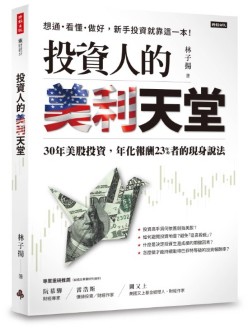Source
The “Buffett indicator” was an idea first proposed by Buffett in an article “Warren Buffett On The Stock Market” in Fortune magazine in December 2001.
The original text of his interview at that time is published at the end of this article.
Definition
It is calculated as the ratio of the total market capitalization of the stock market divided by the gross national product (GNP).
GNP is equivalent to the “total amount” of a country’s economic output. When the market values the profits of all companies, that is, the market value of the country’s stock market, it far exceeds the country’s total economic output. This is often when the stock market reaches its peak. Important indicators. Since the gross domestic product (GDP) of each country is usually not much different from GNP, GDP is usually used instead of GNP when calculating.
Guidance to investors
If the “Buffett indicator” is less than 50%, it means that the stock market is seriously undervalued, between 50% and 75% it is slightly undervalued, between 75% and 90% it is reasonably valued, between 90% and 115% it is slightly overvalued, and high At 115%, it is seriously overvalued.
Buffett indicator trend chart, 1950 to 2022

What is the average?
The average value of the Buffett indicator since 1970 is about 0.95.
Applications
Because Buffett uses this indicator, it makes sense that it has been quite reliable in the past, showing that stocks are extremely overvalued relative to U.S. economic output. It accurately predicted the two major U.S. stock market crashes in 1987, avoiding the Internet stock bubble in 2000, and the financial tsunami in 2008. The “Buffett indicator” is regarded as a long-short wind direction ball and is used to measure the relative level of the stock market.
The original text of Buffett’s interview
On a macro basis, quantification doesn’t have to be complicated at all. Below is a chart, starting almost 80 years ago and really quite fundamental in what it says. The chart shows the market value of all publicly traded securities as a percentage of the country’s business–that is, as a percentage of GNP. The ratio has certain limitations in telling you what you need to know. Still, it is probably the best single measure of where valuations stand at any given moment. And as you can see, nearly two years ago the ratio rose to an unprecedented level. That should have been a very strong warning signal.
For investors to gain wealth at a rate that exceeds the growth of U.S. business, the percentage relationship line on the chart must keep going up and up. If GNP is going to grow 5% a year and you want market values to go up 10%, then you need to have the line go straight off the top of the chart. That won’t happen.
For me, the message of that chart is this: If the percentage relationship falls to the 70% or 80% area, buying stocks is likely to work very well for you. If the ratio approaches 200%–as it did in 1999 and a part of 2000–you are playing with fire. As you can see, the ratio was recently 133%.
Shortcomings
The Buffett indicator also has its flaws. One problem is that it doesn’t take into account interest rates, which are currently at their highest levels in more than 20 years. Nor does it take into account the fact that the share of corporate profits coming from abroad is growing. Portfolios are complex and no indicator is absolutely accurate.
Another potential problem unique to now is that much of the market’s gains over the past 18 months have been driven by a handful of large-cap stocks. This means that the indicator may be ignoring the idea that many stocks remain cheap relative to history, while a few are extremely expensive.
Finally, overseas businesses account for an increasingly large proportion of the overall revenue and profits of American companies. Therefore, focusing only on the United States will make the “Buffett Index” biased.
What about now?
In early July, this rose to over 200%, reaching levels not seen since early 2022. The last time the ratio rose, it marked the S&P 500’s worst annual decline since 2008, according to FactSet data.
Related articles
- “Why Shiller CAPE is more popular than the Buffett indicator?“
- “Indicators helps to interpret the direction of stock market and economic climate“
- “Fedex directly linked to economic prosperity, how does Fedex make money? why it’s downward? “
- “Powerful and persuasive Buffett indicator, whether market is overheat“
- “Irrational Exuberance Indicator“
- “Why market fall after Q2 2004 earning report?“
- “Sahm Rule, a 100% accurate recession indicator, was triggered“
- “Buffett’s most important original book “Tap Dancing to Work“
- “The relationship between GDP and stock prices“
- “Tax, inflation and rate are the top three serious killers to investors“
- “US Gross domestic product (GDP) querier“
- “Simple and compound interest calculator“
- “IRR Calculator“
- “Investors should care annualized rate of return (IRR), calculate with free IRR Calculator“
- “Identify good companies with corporate culture, how to do in overheated market?“
Disclaimer
- The content of this site is the author’s personal opinions and is for reference only. I am not responsible for the correctness, opinions, and immediacy of the content and information of the article. Readers must make their own judgments.
- I shall not be liable for any damages or other legal liabilities for the direct or indirect losses caused by the readers’ direct or indirect reliance on and reference to the information on this site, or all the responsibilities arising therefrom, as a result of any investment behavior.
